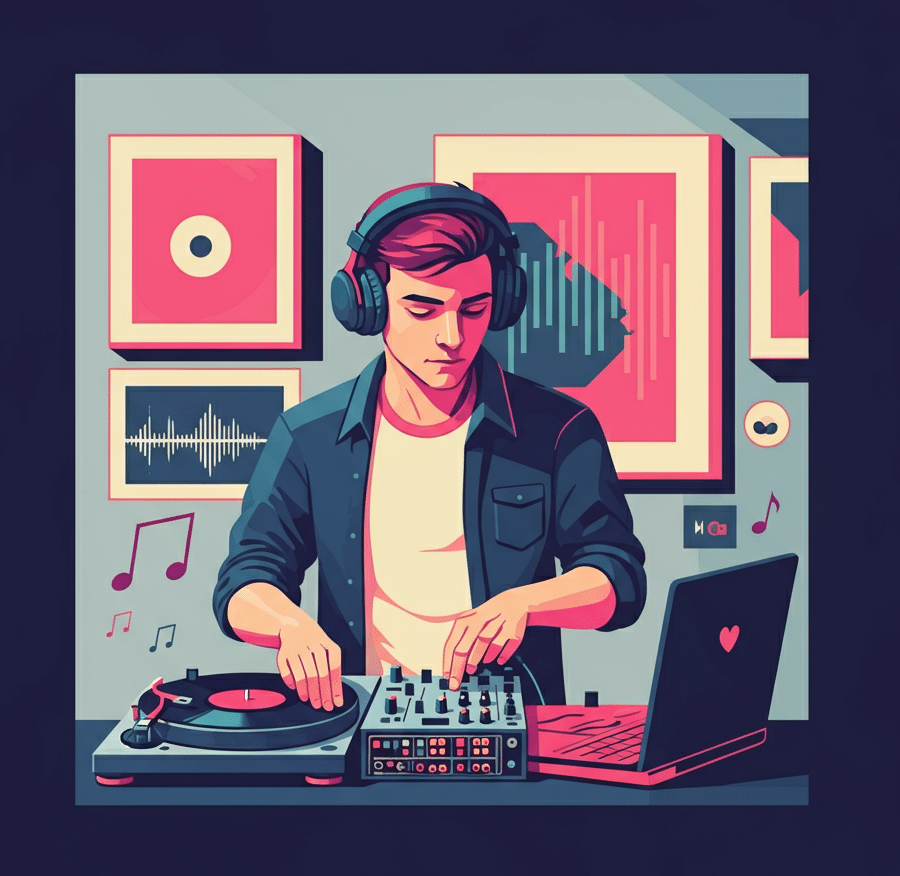5 Mistakes Every New DJ Curator Makes

Transitioning from playing songs to curating immersive experiences is a key milestone in a DJ’s journey. This role needs more than technical skills—it takes storytelling, intuition, and reading each room’s energy. As you grow, you’ll hit challenges that can slow you down or push you forward—spotting them is the first step to leveling up your craft.
For an unforgettable event, book the number one corporate event DJ, Will Gill. He has over 2,000 five-star reviews as a testament to his extraordinary skills.
Watch Will Gill on stage by viewing the video below.
Here are five mistakes every new DJ curator makes—and how you can sidestep them.
1. Programming Without a Story
A DJ set should take listeners on a journey, not just shuffle through a playlist. Many new DJs start with nonstop high-energy tracks and skip building tension and release. Without planned ebb and flow, your set risks draining the crowd’s enthusiasm early.
Flat, one-dimensional programming causes energy to plateau and leaves the audience restless or uninterested. A strong set of moves. It builds peaks of excitement and dips into calm, keeping attention from start to finish.
The Fix: Visualize your set in three acts: a gentle warm-up, an electrifying peak, and a smooth cool-down. By intentionally guiding the arc of the evening, you shape both mood and memory.
Actionable Tip: Before each gig, draft a simple energy graph outlining your set’s rise and fall. Map where you want to lift the energy and where you will let it breathe. This method provides a framework for musical storytelling.
2. Chasing Trends Instead of Building an Identity
It’s easy to overload your playlist with the current top tracks from music charts or social media feeds. While being aware of contemporary trends is useful, leaning exclusively on popular songs undermines your authenticity as a curator.
If you only play trending music, you blend in and sound like every other DJ. A DJ curator’s real value is a unique sound that shows their taste in every set.
The Fix: Strive for balance. Integrate a few well-chosen popular tracks, but let your signature style and uncommon favorites take center stage. Cultivating your own musical fingerprint sets you apart and forges a deeper audience connection.
Actionable Tip: For every hit, add two taste picks—a classic, deep cut, or new artist.
3. Ignoring the Venue and Audience
No two events are the same, and each calls for a thoughtful approach. A set designed for a pulsing nightclub will likely fall flat at an intimate rooftop gathering. Failing to adapt to the venue and audience creates a disconnect and a missed opportunity.
Playing music that doesn’t fit the space makes guests uncomfortable and confused, and it can hurt your reputation. Your responsibility is to complement the space’s mood, not disrupt it.
The Fix: Prepare with purpose. Look at past event photos or videos, and ask organizers about the expected crowd. Determine whether your music should act as background texture or command full attention.
Actionable Tip: Curate playlists or music folders tailored for different spaces and audiences (“Lounge,” “Peak-Time Club,” “Corporate,” etc.). With this strategy, you’re prepared to align your set with any context.
4. Having a Messy Music Library
An unwieldy music library is the enemy of spontaneity and creativity. Hunting through a messy library slows you down and drains your performance energy. Organization is key to adaptability.
If your library is a mess, you default to overplayed favorites simply because they’re easy to find. This predictability makes your sets monotonous and limits your ability to respond in the moment.
The Fix: Implement a robust tagging system. Go past genre and tempo. Tag tracks by vibe (uplifting, moody, driving), energy level (1–5), and best slot (warm-up, peak, after-hours). Well-ordered libraries enable fast, inspired decisions.
Actionable Tip: Dedicate an hour each week to managing your music collection. Add discoveries, purge uninspiring tracks, and keep your tags current.
5. Not Testing Your Set Live
No amount of planning can replace the experience of reading a live room. Stubborn adherence to a fixed setlist, even as the crowd disengages, prevents you from truly curating the evening. Great artistry is about adapting. Respond in the moment to your audience’s cues, both subtle and obvious.
If you resist changing course, you risk draining the room’s energy and diminishing your reputation. Great DJs participate in a dynamic exchange, feeding off the crowd and shaping the experience together.
The Fix: Treat every show as an ongoing conversation. Bring a plan, but be willing to improvise. Notice body language, shifting energy, and the collective mood—they are your signals.
Actionable Tip: Prepare several “test” tracks—short segments or new genres—to gauge crowd reaction. Use these to deftly steer your set in the direction that gets the best response.